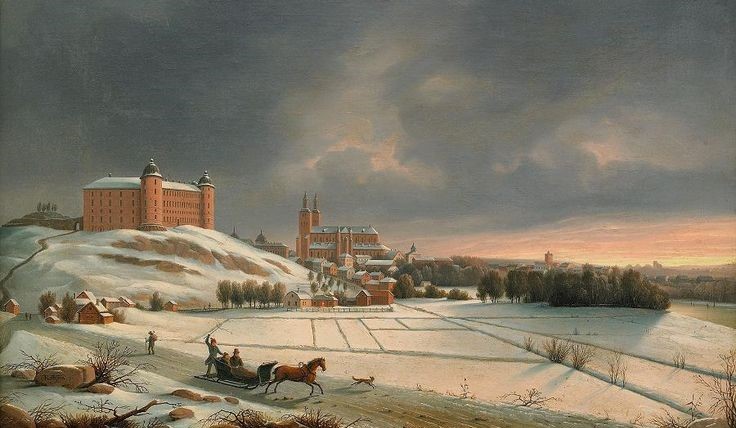A brief history of the castle
A brief history of the castle from the 1500’s to today.
1500’s – A royal fortress in the heart of the kingdom
In 1549, Gustav Vasa ordered the construction of Uppsala Castle. The castle was built as a defense fortress according to contemporary Italian fortification technology.
Uppsala Castle was also a place for court life, with its intrigues and grandeur. The castle held lavish coronations, but also gruesome assassinations.
After a devastating fire in 1572, Johan III began the work of turning his father's defensive fort into a luxurious renaissance palace.
In the 1600’s, Uppsala Castle was the site of some of the most pivotal events in the history of the kingdom. This was where Gustav II Adolf decided on Sweden’s entry into the thirty years’ war, and where Queen Christina abdicated the throne.
1600’s - The Governor moves in
Uppsala Castle – a seat of power for the city, the county, and the kingdom. Large sections of the population were hit hard by the pervasive wars of the Swedish Empire in the 1600’s.
At the beginning of the 1600’s, the state apparatus was growing, and the castle became a seat of the Governor, who still has a residence at the castle today. To the west of the castle, a new garden was created, which today serves as the University’s botanical gardens.
1700’s - Ash and commotion
Chaos and darkness, amidst a fire-ravaged city – dramatic tendencies inspire the new design of the castle.
The century starts with large parts of Uppsala and the castle being left in ruins by a substantial fire.
The castle stood as a ruin for decades, with rebuilding efforts only starting in 1744. This was when the castle was given the appearance it has today.
1800’s - An armory, a silo, and a prison
The design shows how the prison and the governors became connected, creating a mirror image of those who were imprisoned and those who issued punishments.
After the loss of Finland, Sweden was a small country undergoing change. Uppsala grew into an industrial city, and the castle continued to be the seat of the Governor and his government, the county administrative board.
Despite the reconstruction efforts of the 1700’s, large parts of the castle were still unfurnished, and it was used as an armory, a silo, and a prison, among other things.
20th century - The people take their place
In the 1900’s, society was being democratized in earnest, and the people gained rights and influence through reforms such as universal suffrage.
In the 1900’s, the people of Uppsala started taking up space at Uppsala Castle and on the castle hill. In 1917, thousands of protestors gathered on the courtyard, demanding universal and equal voting rights. This became the start of a long tradition of protests around the castle.
In the 1930’s, the old hall of state was rebuilt and became one of the most important places for celebrations and ceremonies in the city. The castle also became home of the national archives, museums, and some of the departments of the University. The Governor was also still present, and moved up to the previously unfurnished royal apartment.
21st century - Art exhibitions, concerts, and rooftop tours
Today, Uppsala Castle is a modern tourist destination. Celebrations, culture, and ceremonies remain, while businesses, museums, and other operations have taken their place in the rooms of the castle as well. Visitors can visit art exhibitions, go to concerts, and go on rooftop tours.
Today, the castle is managed by the National Property Board, and along with the Cathedral and the University Hall, it continues to be an important part of the city skyline.


